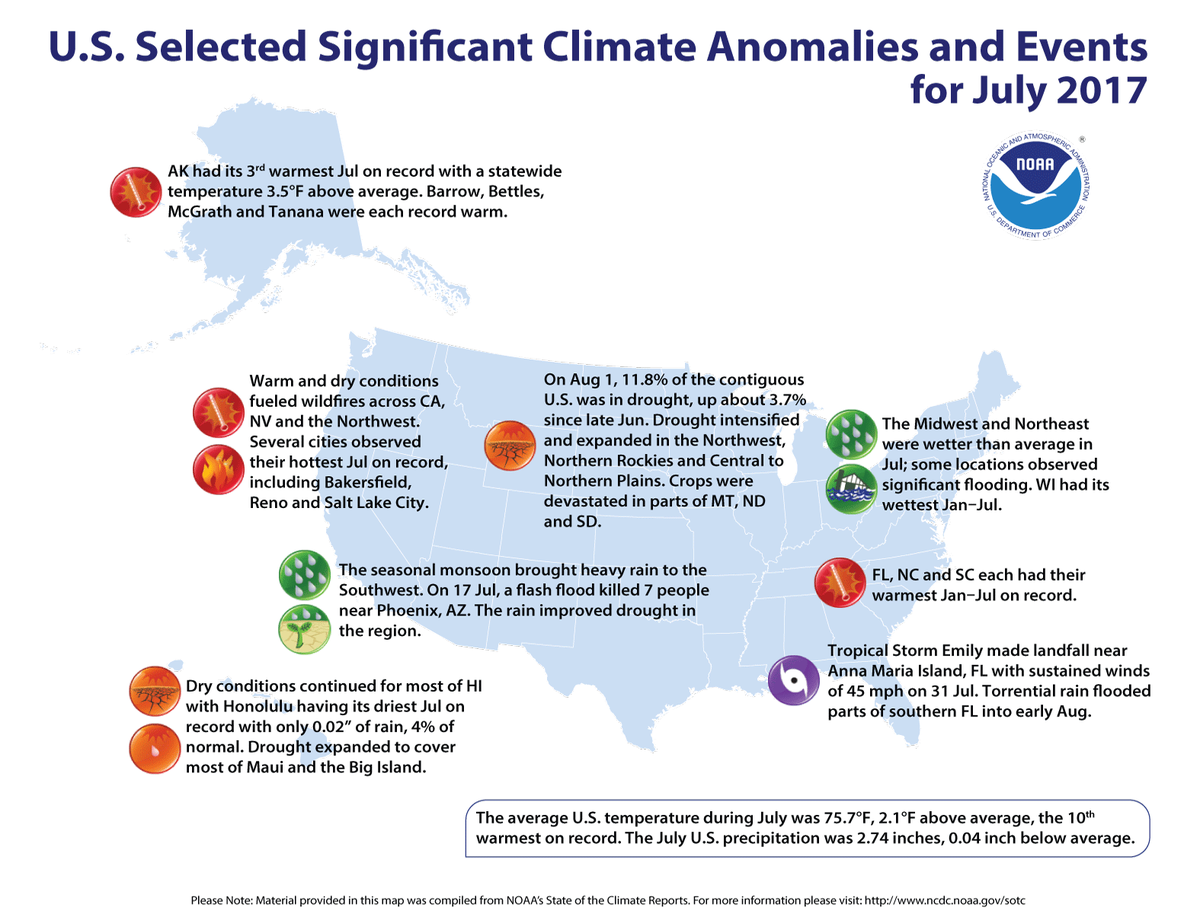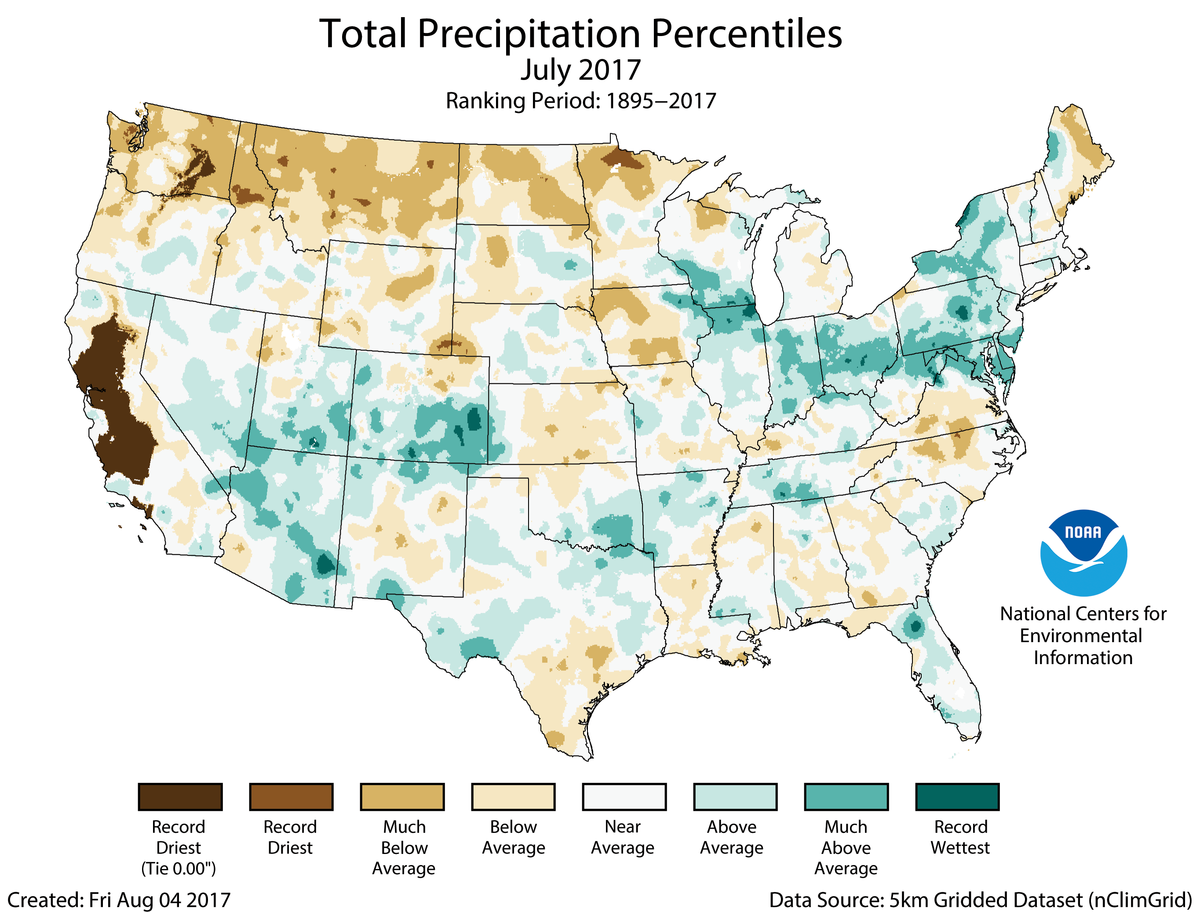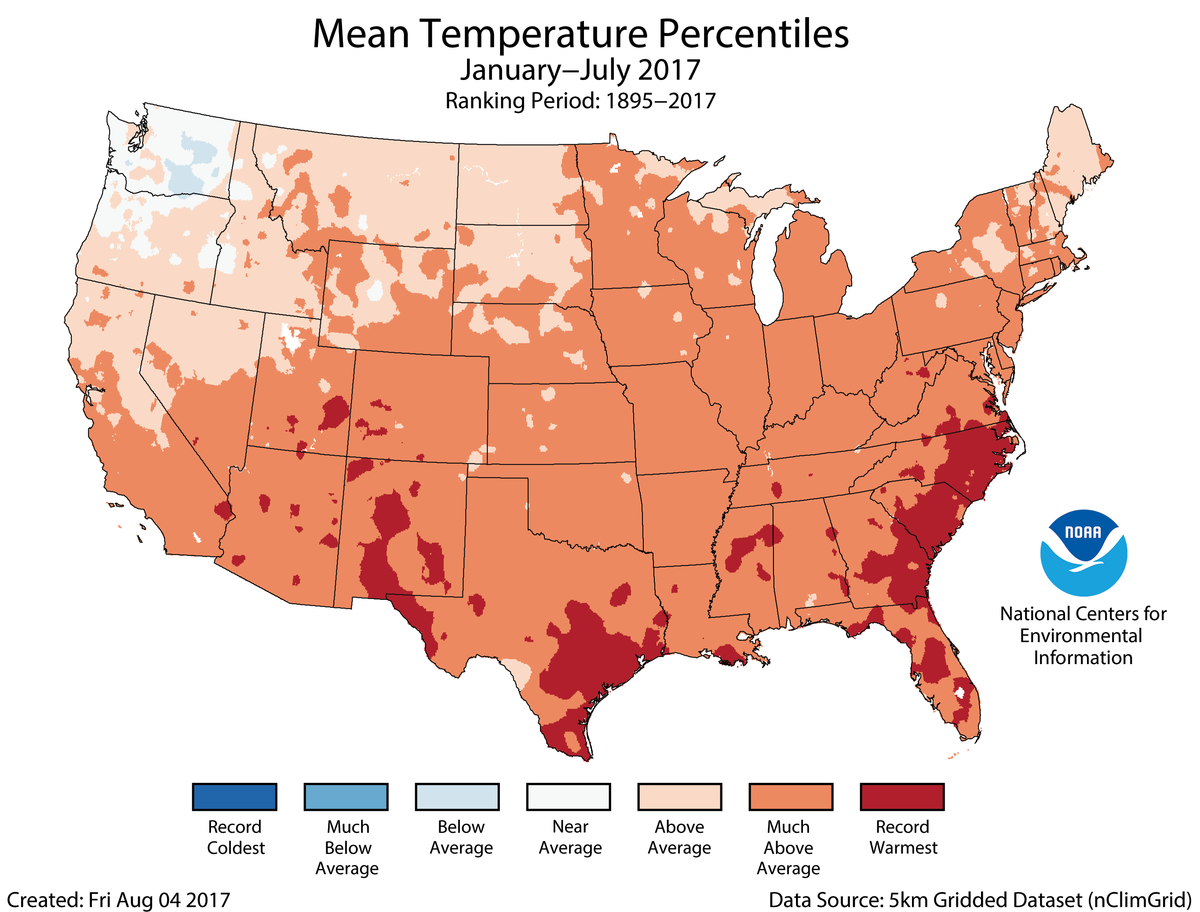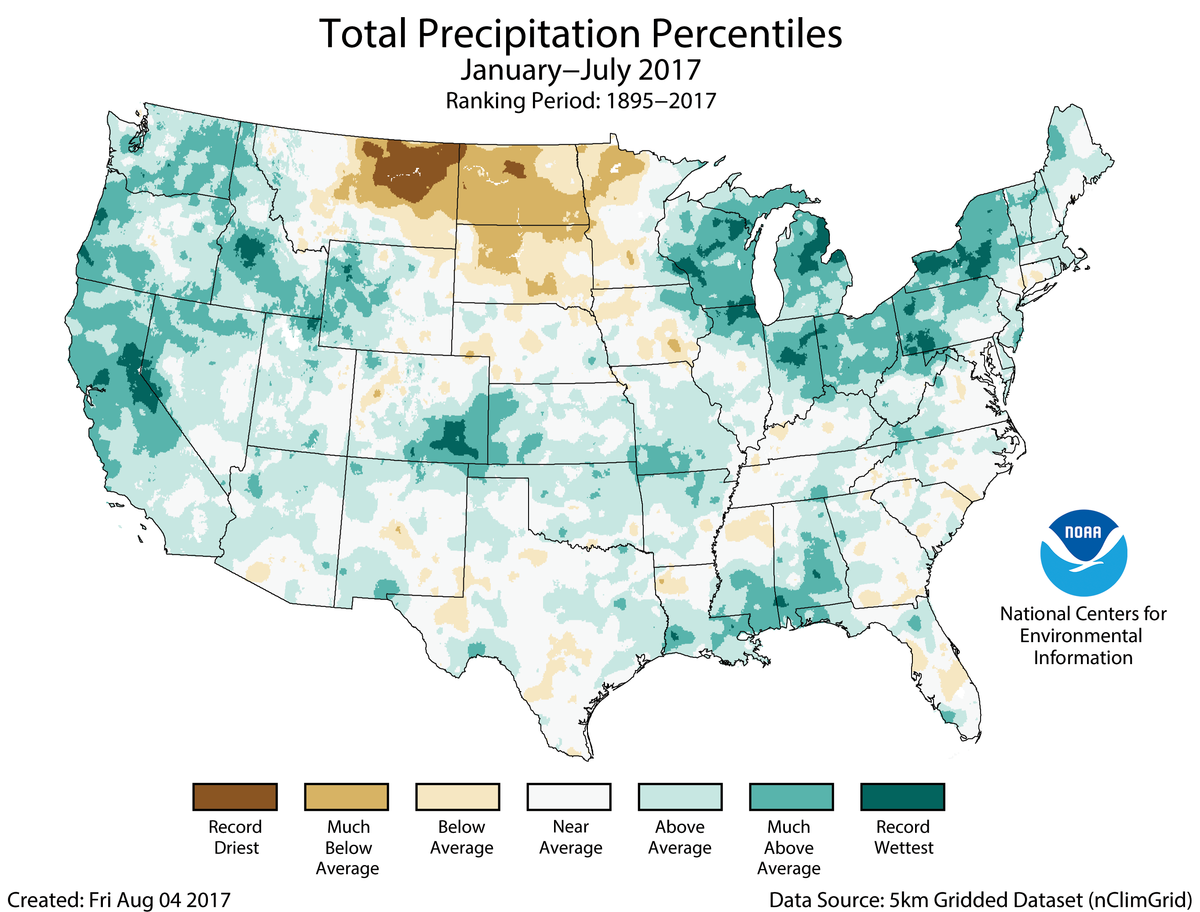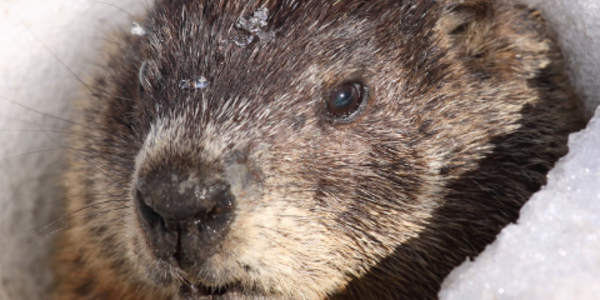The contiguous United States had its 2nd warmest year to date and 10th warmest July on record

The July average temperature for the contiguous U.S. was 75.7°F, 2.1°F above the 20th century average and was the 10th warmest July in 123 years of record-keeping. Much-above-average temperatures were observed across the West and parts of the Mid-Atlantic and Southeast. The year-to-date (January–July) average temperature for the contiguous U.S. was 54.5°F, 3.2°F above average and second warmest on record. This was slightly warmer than the same period in 2006 and 1.2°F cooler than the record set in 2012.
The July precipitation total was 2.74 inches, 0.04 inch below the 20th century average and was near the middle value of the 123-year period of record. Above-average precipitation in the Southwest, Midwest and Northeast offset below-average precipitation in the Northwest and Northern Plains. The year-to-date precipitation total was 20.68 inches, 2.59 inches above average. This was the seventh wettest year-to-date on record and wettest since 1998.
See all July and year-to-date U.S. temperature and precipitation maps.
This monthly summary from NOAA’s National Centers for Environmental Information is part of the suite of climate information services NOAA provides to government, business, academia, and the public to support informed decision-making.
July Temperature
-
Above-average temperatures were observed for locations from the West Coast to Rocky Mountains with several locations in the Southwest and Great Basin being record warm. Bakersfield, California; Reno, Nevada; and Salt Lake City, Utah, each had their hottest July, and hottest month, on record. Parts of the Mid-Atlantic and Southeast were also warmer than average, with Miami also observing its hottest July, and hottest month, on record.
-
Near- to below-average temperatures were observed in parts of the Great Plains, South, Midwest, and Northeast. Above-average precipitation in the Midwest and Northeast was associated with suppressed daytime maximum temperatures.
-
The Alaska July temperature was 56.2°F, 3.5°F above the long-term average. This was the third warmest July on record for the state. Central and northern areas of Alaska were record warm including Barrow, Bettles, McGrath, and Tanana. Many locations observed their warmest month, of any month, on record.
July Precipitation
-
Below-average precipitation was observed from the Northwest through the Northern Rockies and into parts of the Northern Plains and Upper Midwest. Montana had its second driest July on record with only 29 percent of average precipitation. Areas of central California were also record dry, receiving no precipitation, a common summer occurrence. The wet winter, followed by the dry summer, in the West created ideal wildfire fuels with numerous large and destructive fires burning during July. Below-average precipitation was also observed for parts of the central and southern Great Plains, Southeast, and northern New England.
-
Above-average precipitation was observed in the Southwest, in part due to an active monsoon season that kicked into high gear mid-month. Above-average precipitation was also observed across the Midwest and into parts of the Northeast and Mid-Atlantic with several intense one-day precipitation events causing significant flooding at numerous locations.
-
According to the August 1 U.S. Drought Monitor report, 11.8 percent of the contiguous U.S. was in drought, up about 3.7 percent compared to the end of June. Drought improved across parts of the Southwest, southern High Plains, and in the Washington, DC, area. Drought intensified and expanded in the Northwest, Northern Rockies, and Central to Northern Plains driven by below-average precipitation and above-average temperatures. The drought and heat decimated crops in the Northern Plains. Drought and abnormally dry conditions developed in parts of the Southeast and northern Maine. Drought continued to impact parts of Hawaii and western Alaska.
Year-to-Date (January–July) Temperature
-
Above-average temperatures spanned the nation for the first seven months of 2017 with only parts of the Northwest cooler than average. Much-above-average temperatures were observed for most locations in the Southwest and from the Rockies to the East Coast, mostly due to record and near-record warmth early in the year. Florida, North Carolina and South Carolina had their warmest January–July on record.
Year-to-Date (January–July) Precipitation
-
Above-average precipitation was observed for a large part of the contiguous U.S. with much-above-average precipitation observed for nine states across the West, and from the Great Lakes to Northeast. Wisconsin had its wettest January–July on record with 25.25 inches, 7.14 inches above average.
-
Below-average precipitation was observed for the Northern Rockies and adjacent Plains. North Dakota had only 6.80 inches of precipitation, 60 percent of average. This was the third driest year-to-date for the state and the driest since 1936.
Weather and Climate Extremes
-
The U.S. Climate Extremes Index (USCEI) for the year-to-date was the fifth highest value on record at one and a half times the average. On the national scale, extremes in warm daytime and nighttime temperatures, one-day precipitation totals, days with precipitation, and the spatial extent of wet conditions contributed to the elevated USCEI. The USCEI is an index that tracks extremes (falling in the upper or lower 10 percent of the record) in temperature, precipitation, drought, and landfalling tropical cyclones across the contiguous United States.

